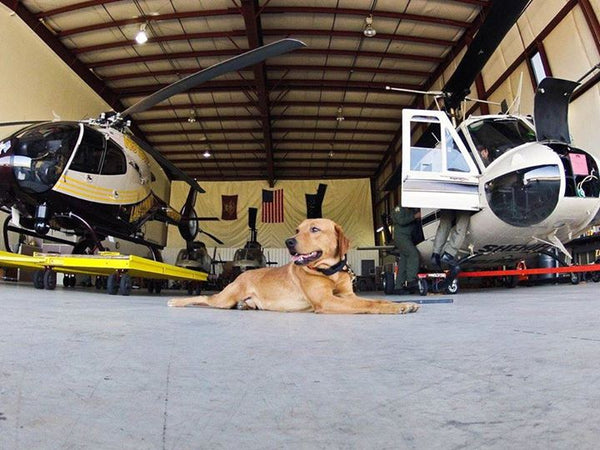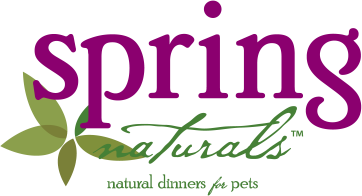
Dogs with Jobs: Search & Rescue, Police K-9s, Service Dogs and More
Have you ever heard someone say ‘I’m working like a dog’? Or, maybe you’ve used the term yourself. It’s not really surprising that so many people equate their work ethic to a canine’s, especially when they are describing their diligent efforts or when they are working tirelessly toward a project or goal.
Since the initial domestication of dogs, canines have evolved into some of the hardest workers in today’s modern workforce. In fact, their exceptional skill set enables dogs to perform remarkable tasks such as assisting the disabled/deaf/blind, detecting bombs, calming psychological trauma, and even saving lives!
Although most people think of as dogs as a beloved pet or cuddly companion, the truth is that a growing number of canines are being employed for serious jobs they work very hard at. Whether they have natural talents that are developed for specialty jobs or are purposely trained to help people, the invaluable work that dogs provide has become of great benefit to humans.
Dogs have more than earned their reputation as man’s best friend, but for those canines who have the responsibilities of a working dog, they have not only become an integral part of the workforce, they contribute to the global economy and society as a whole.

Why Certain Breeds Are Better at Some Jobs
Many dog breeds were intentionally bred with the specific purpose of helping ranchers and farmers move their livestock. Some breeds are natural born hunters and others are innately fierce protectors. Throughout history, certain types of dogs have been bred with the sole purpose of being trained for a specific task.
That being said, many institutions and individuals that train working dogs have demonstrated that purebred dogs aren’t the only ones who can make amazing working dogs. You’ll find many mixed breeds and rescues sharing the working field these days.
One reason, though, you do tend to see purebred dogs more often than not is for health backgrounds. Working dogs take YEARS to train properly, and years of work can come to a halt if a dog has a physical ailment or genetic disorder that will slowly break down the dog’s ability to be active. For this reason, many institutions that invest the money and time in training working dogs require a breeding history, with generations of genetic health tests to hedge their bets on healthy pups.
While dogs traditionally have a history of working as herders, hunters, and guarders, the jobs they perform today are much more diversified than the tasks performed by their ancestors.
It’s a Dog’s Life
A dog’s unique traits and special skills have earned them an important place in history. Since before the turn of the century, humans have relied on dogs to perform a number of tasks because of their incredibly keen sense of smell, their favorable disposition, and propensity for training.
Let’s take a look at some jobs that dogs perform along with the breeds that are most suited to carry out the work successfully.
Service and Assistance- One of the more popular, well-known jobs that dogs have is service and assistance. Many of the tasks these dogs perform can assist an individual (adult or child) with a disability, boost their independence and improve their quality of life.
These four breeds are considered the best service dogs: Labrador Retrievers, German Shepherds, Golden Retrievers, and Labrador and Golden Retriever mixed.

Seeing-eye/guide dogs- Assist the visually impaired by being their ‘eyes.’ These capable canines help people navigate the world inside and outside their home.
Labradors and Golden Retrievers make exceptional guide dogs because of their intelligence and acute awareness.
Hearing dogs- Assist the deaf and hearing impaired. These hard working dogs can alert their owner to sounds such as knocking at the door, a telephone ringing, oven timers, alarm clocks, an active smoke alarm, etc.
Terrier mixes, Poodles, Cocker Spaniels, Shih Tzu and Chihuahuas make terrific hearing dogs because of their high energy (alertness), steady temperament, and attentiveness to sound.
Medical alert dogs- Can sense medical emergencies such as an epileptic seizures, diabetic shock, heart attack, stroke, etc.
Labradors, Golden Retrievers, American Staffordshire Terriers, and Collies are ideal medical alert dogs because of their intensive training and innate ability to sense an impending medical problem or attack.
Mobility dogs- Assist people who have limited mobility (physical limitations). These dogs can aid in walking, help a person balance, open doors, push buttons, retrieve dropped items, turn lights on and off, etc.
Labrador Retrievers, Golden Retrievers, Poodles, German Shepherds, Boxers, Collies, and Bernese Mountain dogs make exceptional mobility dogs because of their impressive intelligence, friendly disposition, attentiveness, and natural retrieval instinct.
Search and Rescue –Combine bravery with a keen sense of smell, hearing, and direction and you’ll have an enthusiastic search and rescue (SAR) dog that’s ready to go! Amazingly, these intensively trained pups can detect a living or dead human scent through the air or ground. SAR dogs are serious heroes who face perilous situations every day to retrieve lost or deceased humans. These dogs are specifically trained to work in a number of different fields that need help locating missing people in severe weather conditions (avalanche), the wilderness (missing hikers), debris (collapsed buildings), and underwater (drowning victims).
You’ll commonly find German Shepherds, Labrador Retrievers, Golden Retrievers, Beagles and Coonhounds working these jobs because of their trainability and high level of intelligence.
Psychiatric/Therapy Dogs- These dogs are extremely helpful to those people who suffer from post-traumatic stress disorder (PTSD), panic attacks, or other mental health disorders. Therapy dogs have a calming presence and offer great emotional support. Therapy dogs are great ‘comfort companions’ used in classrooms, hospitals, hospices, and nursing homes. Since their sole purpose is to make people feel better, they are the ideal to help in an area where a disaster has taken place- hurricane, tornado, earthquake, explosion, and school/mass shooting.
Labradors, Golden Retrievers, and Spaniels make great therapy dogs because of their kind disposition and passive nature.
Police Dogs- Highly acclaimed Police “K-9” dogs are the ideal partner for police work because of their drive, focus, and commitment to ‘getting the job done.’ Specifically trained to assist police, other law enforcement personnel, and the military, their duties include but are not limited to: searching for drugs and explosives, locating missing people, finding crime scene evidence, and attacking people targeted by the police.
The most common dog breeds used as police dogs include German Shepherds, Belgian Malinois, Bloodhounds, Dutch Shepherds, Dobermans, and Labrador Retrievers.
Detection Dogs - With an amazing sense of smell (225 million scent receptors in their noses compared to a human’s 5 million), these super sleuth hounds can sniff out just about anything they are trained to search for— from drugs, explosives, food, and money to blood, decomposing bodies, and missing humans. Detection dogs possess favorable character traits of physical strength, sensory power, and mental alertness. Many detection dogs are employed at airports, schools, and border crossings.
Many of the breeds used for detection work are: Coonhounds, English Springer Spaniels, Labrador Retrievers, German Shepherds, Beagles, Bloodhounds, and Basset Hounds.

(Above: Spring Naturals' staff member Liz London in her previous role as a detection dog trainer)
Sled Dogs - For over 3,000 years canines have been bred to pull sleds across the snow and ice, especially to remote areas in extreme conditions. Sled dogs are renowned for unmatched resiliency along with their size, agility, stamina, and speed. Although many pups can be trained for sledding, one prerequisite is a double coat of thick fluffy fur that serves as protection against harsh elements and sub-zero degree temperatures.
Alaskan Huskies and Malamutes are the most well-known sled dogs; other well suited breeds for sledding: Chinook, Samoyed, Siberian Huskies, and Canadian Eskimo Dog.
Watch and Guard Dogs- These canines are intensively trained to watch for, or guard against, unwanted or unexpected intruders—this includes both humans and animals! One of the most effective character traits of a guard/watchdog is their powerfully loud and threatening bark. Watch dogs are typically trained to be more alert and ready to quickly ‘sound the alarm’ in comparison to guard dogs who are loyal and protective of their owners.
The most effective breeds for a guard or watch dog include Doberman Pinschers, Miniature Schnauzers, Scottish Terriers, West Highland White Terriers, German Spitzs, German Shepherds, and Rottweilers.
Herding – Herding is considered one of the oldest professions for a working canine. Many dogs are just natural born herders when it comes to rounding up livestock-—whether it’s goats, chickens, or cattle. Herd dogs have an impressive skill set that includes frantic weaving and running, intense eye contact, and nipping at the heels. A herding dog’s technique involves using this skill set to closely bring livestock together and then move the herd in a forward direction. The ability dogs have to maintain control over a herd and/or corral them at the end of the day can be attributed to their DNA.
The best herding dogs include: Australian Cattle dogs, Belgian Sheepdogs, Border Collies, Old English Sheepdogs, and German Shepherds.

Hunting and Tracking- A dog’s keen sense of smell makes them terrific tracking and hunting dogs. In addition to their amazing sense of smell, hunting and tracking dogs are receptive to training, have stamina & endurance, and possess a strong prey drive. Ironically, as enthusiastic as dogs are to hunt and track their prey, they simply alert their handler of the ‘capture’ rather than harming or attacking their prey.
Best breeds for tracking and tracking: Bloodhounds, Terriers, Basset Hounds, American Fox Hounds, Beagles, Belgian Malinois, German Short-haired Pointers, Dachshunds, and Labrador Retrievers.
Hollywood Dogs –Our working dog list wouldn’t be complete without mentioning those canines who work diligently to entertain us on the big screen. From Lassie, Rin Tin Tin, and Toto to Beethoven, Benji, and Old Yeller, these popular pups are irresistibly cute and renowned for their work ethic. Canine actors need to have good concentration (not easily distracted by noises, crew, lights, etc.), follow commands & take direction well, and be receptive to learning new tricks.
Canines that work in the entertainment industry come in all shapes and sizes. Any breed that meets the criteria for working with actors on the big screen can become a Hollywood dog!
Conclusion
While many canines might not have the ‘right’ skill set or disposition to become a search and rescue, hunting, or therapy dog, dogs still have an important job in the life of their owners—even if they prefer to simply give you doggy kisses, lounge around, or play all day.
For centuries dogs have stood loyally by humans-—whether they are content with being a cuddly companion or take on a more challenging role as a working dog. The truth is that humans would be lost without the help of our canines because of the amazing feats and specialized tasks they are able perform. Our furry four legged friends not only contribute to our overall well-being but are of great benefit to society as a whole.

Post a Comment!